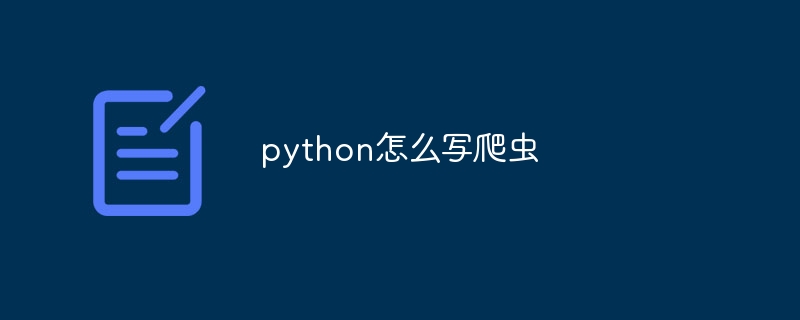python怎么写爬虫
python 中编写爬虫的方法:安装 requests、beautifulsoup 和 lxml 库;导入库并创建爬虫;获取网页;解析 html;提取数据;处理数据;迭代抓取;处理错误;使用代理和标头。

如何使用 Python 编写爬虫
引言
Python 因其丰富的库和简单易懂的语法而成为构建爬虫的理想选择。下面我们详细介绍如何在 Python 中编写一个爬虫。
步骤 1:安装必要的库
对于基本爬虫,您需要安装以下库:
- requests: 用于发送 HTTP 请求。
- BeautifulSoup: 用于解析 HTML。
- lxml: 加速 BeautifulSoup 解析速度(可选)。
使用 pip 安装这些库:
pip install requests BeautifulSoup4 lxml
步骤 2:创建爬虫
创建一个 Python 文件并导入必要的库:
import requests from bs4 import BeautifulSoup
步骤 3:获取网页
使用 requests 获取要抓取的网页:
url = 'https://example.com' response = requests.get(url)
步骤 4:解析 HTML
使用 BeautifulSoup 解析网页内容:
soup = BeautifulSoup(response.text, 'html.parser')
步骤 5:提取数据
使用 find() 和 find_all() 方法从 HTML 中提取所需数据。例如,要获取所有超链接:
links = soup.find_all('a')
步骤 6:处理数据
您可以进一步处理提取的数据,例如:
- 过滤特定元素。
- 清除不需要的字符。
- 保存到数据库或文件。
步骤 7:迭代抓取
您可能需要迭代抓取多个页面。您可以使用递归或循环来实现此目的。
步骤 8:处理错误
在抓取过程中可能会遇到错误。使用 try 和 except 来处理这些错误。
步骤 9:使用代理和标头
为了避免被目标网站阻止,可以使用代理和标头。
示例
以下是一个简单的代码示例,显示如何从 Stack Overflow 中抓取问题标题:
import requests from bs4 import BeautifulSoup url = 'https://stackoverflow.com/questions' response = requests.get(url) soup = BeautifulSoup(response.text, 'html.parser') questions = soup.find_all('div', {'class': 'question-summary'}) for question in questions: title = question.find('a', {'class': 'question-hyperlink'}).text print(title)
以上就是python怎么写爬虫的详细内容,更多请关注www.sxiaw.com其它相关文章!
